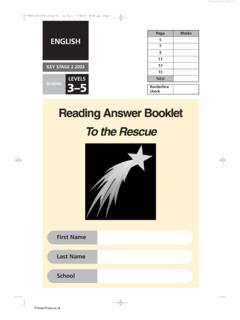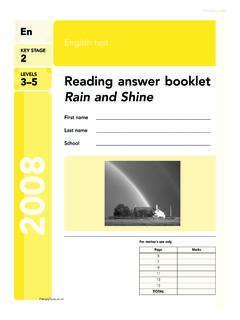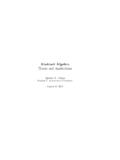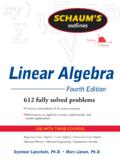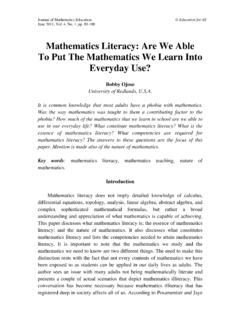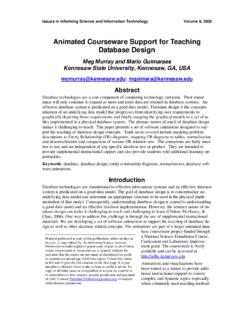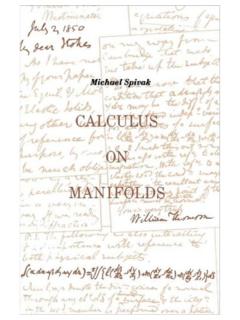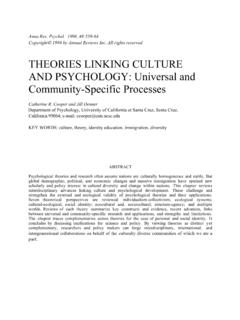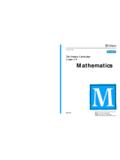Transcription of DRAFT: 2016 Mathematics, Reading and Science Key Stage 2 ...
1 Key: mathematics Reading Science Text in bold is main criteria Text not in bold in a pale background is sub criteria DRAFT: 2016 mathematics , Reading and Science Key Stage 2 Teacher Assessment Performance Descriptors DRAFT: 2016 mathematics , Reading and Science Key Stage 2 teacher assessment performance descriptors 2015 Number and place value Solve problems and reason about place value and number Use place value in whole numbers to at least 10 000 000 to read, write, compare and order numbers Identify the value of each digit in numbers with up to 3 decimal places Round any whole number to the nearest 10, 100, 1,000, 10,000, 100,000 Use approximation to estimate and check answers to calculations and determine, in the context of a problem, levels of accuracy Use negative numbers in practical contexts and solve problems, including calculating intervals across 0 Addition.
2 Subtraction, multiplication, division Use knowledge of the 4 operations to reason and to solve problems, including puzzles not set in a context (aims) Add and subtract mentally with increasingly large numbers Add and subtract whole numbers with more than 4 digits, using formal written methods Solve addition and subtraction multi-step problems in context Recognise and use: multiples and factors ; prime numbers to at least 19; and square numbers, at least up to 144 Use understanding of place value to multiply and divide whole numbers and decimals with up to 3 decimal places by 10, 100 and 1000 Multiply and divide numbers mentally, drawing upon multiplication facts.
3 Including with mixed operations and large numbers Perform mental calculations including with mixed operations and large numbers Fluently multiply numbers up to 4 digits by a 2-digit number using the long multiplication method Fluently divide numbers with up to 4 digits by a 1-digit number using the formal written method Use long division with 2-digit divisors Interpret remainders according to the context Solve problems involving addition, subtraction, multiplication and division Use estimation to check answers to calculations and determine, in the context of a problem, appropriate levels of accuracy Fractions including decimals and percentages Solve problems and reason about fractions, decimals and percentages (aims) Use common factors to: simplify fractions.
4 Identify equivalent fractions, using common multiples to express fractions in the same denomination Recognise the per cent symbol (%) and understand that per cent relates to number of parts per hundred Recall and use equivalences between simple fractions, decimals and percentages, in different contexts Associate a fraction with division and begin to calculate decimal fraction equivalents Calculate simple fractions and percentages of whole numbers and quantities Add and subtract fractions with denominators that are multiples of the same number Convert and calculate between improper fractions and mixed numbers where appropriate for the context Fluently add and subtract decimal numbers and round when required to specified degrees of accuracy Multiply one-digit numbers with up to 2 decimal places by whole numbers Use written division methods in cases where the answer has up to 2 decimal places Ratio and proportion Use simple ratio
5 And proportional reasoning to solve problems Solve problems involving similar shapes where the scale factor is known or can be found Algebra Use simple formulae in words, and express missing number problems algebraically Generate and describe linear number sequences Find possible values in missing number problems and equations involving 1 or 2 unknowns Word Reading Fluently and effortlessly reads a range of age appropriate texts, including novels, stories, plays, poetry, non-fiction, reference books and text books Determines the meaning of new words by applying knowledge of the root words, prefixes and suffixes as listed in English programmes of study: key stages 1 and 2 National curriculum in England - Appendix 1 Demonstrates appropriate intonation, tone and volume when Reading aloud text, plays and reciting poetry, to make the meaning clear to the audience Comprehension Demonstrates a positive attitude to Reading by frequently Reading for pleasure, both fiction and non-fiction Has read and demonstrates familiarity with a wide range of books, including myths, legends and traditional stories, modern fiction and fiction from literary heritage, and books from other cultures and traditions)
6 Recommends books to others based on own Reading preferences, giving reasons for choice Has learned a wide range of poetry by heart Explains how language, structure, and presentation, can contribute to the meaning of a text Draws on contextual evidence to make sense of what is read, and participates in discussion to explore words with different meanings Comments on how language, including figurative language, is used to contribute to meaning Asks questions to enhance understanding of the text Is able to make comparisons within and across different texts Draws inferences such as inferring characters feelings, thoughts and motives from their actions, and justifying inferences with evidence Makes predictions based on details stated and implied Distinguishes between statements of fact and opinion.
7 And in non-fiction In non-fiction, retrieves records and presents information to the reader Identifies key details that support main ideas, and uses them to summarise content drawn from more than one paragraph Expresses views formed through independent Reading and books that are read to them, explaining and justifying personal opinions, and courteously challenging those of others Explains and discusses their understanding of what they have read, including through formal presentations and debates, maintaining a focus on the topic and using notes where necessary Identifies themes and conventions demonstrating, through discussion and comment, understanding of their use in and across a wide range of writing Working scientifically While studying the content of biology, chemistry and physics, a pupil at the national standard is able to work scientifically by using first-hand practical experiences and a wide range of sources of information to develop a deeper understanding of a wide range of scientific ideas.
8 This means they are able to: explore and talk about their and other people s ideas analyse functions, relationships and interactions systematically begin to recognise how abstract ideas help them to understand and predict how the world operates begin to recognise that scientific ideas change and develop over time ask their own questions about scientific phenomenon and select and plan the most appropriate ways to answer Science questions using different types of scientific enquiry, including: observing changes over different periods of time noticing patterns grouping and classifying things carrying out comparative and fair tests finding things out using a wide range of secondary sources of information select the most appropriate equipment for a task and take accurate measurements or readings using the appropriate units as required identify when to repeat measurements, if necessary, to ensure given results are reliable draw conclusions based on their data and observations use evidence from a range of sources to justify their ideas use their scientific knowledge and understanding to explain their findings through talk.
9 In written forms or in other ways recall and use appropriate terminology when working scientifically (at least: accurate, conclusion, evidence, fair test, prediction, reliable, supports (evidence), variable, unit) as well as the scientific language and terminology found in the different areas of Science read, spell and pronounce scientific vocabulary correctly at a level consistent with their word Reading and spelling knowledge at key Stage 2 Biology - Structure and function name, locate and describe the functions of the main parts of the digestive, musculoskeletal, and circulatory systems in animals describe the effects of diet, exercise, drugs and lifestyle on how their bodies function in the long and short term describe the reproductive process in some animals and differences in their life cycles (at least.)
10 Mammals, amphibians, insects, birds) name, locate and describe the functions of the main parts of plants, including those in the reproductive system and how water and nutrients are transported describe how plants are affected by their environment and changes to growing conditions Biology - Evolution and inheritance describe how fossils are formed, and how they provide some evidence for evolution use the ideas of inherited characteristics, variation between offspring and adaptation to their environment to describe how living things may have changed over time and evolved Biology - Interdependence use keys to group, classify and identify living things in different ways based on first hand observation or secondary information sources describe the main characteristics used to group plants, animals and micro-organisms according to the main groups in the classification system construct and interpret food chains explain how wider environmental changes may have an impact on living things Chemistry - States of matter compare the characteristics of different states of matter (solids, liquids and gases) describe how materials can change state (with reference to temperature)




